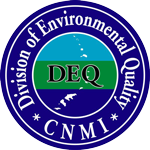
Hafa Adai and Tirow! Welcome to the Division of Environmental Quality - Bureau of Environmental and Coastal Quality website.
Running a Clean Livestock Operation
How do I run a clean livestock operation?
Small farmers on Rota, Tinian, Saipan, and across the Marianas are important to the economy and health of the people. They grow vegetables, fruits, and other crops and produce tasty meats from cattle, pigs, chickens, and other animals. These farmers are carrying on a proud tradition of feeding the people and caring for the land.
Said farmers are also focusing on protecting water quality. Erosion and manure runoff can pollute the streams and coastal waters with harmful bacteria and mud. Sediment and manure runoff also wastes valuable resources that can be used as fertilizer for gardens and orchards. Controlling this polluted runoff is not difficult — it just requires some attention to how animal pens and pastures are managed.
Scroll down for more information on easy steps you can follow to protect our streams and precious ocean. Links are provided to a poster, brochure, video, and other resources on running a clean livestock operation. The community is grateful for what the farmers do in keeping the waters in the Marianas clean for all families, friends, and future generations!
8 Simple Steps to Control Polluted Runoff
1 Use rock, coconut husks, erosion blankets, or plant cuttings to stop erosion.
It is important to not increase the amount of soil in the muddy runoff!
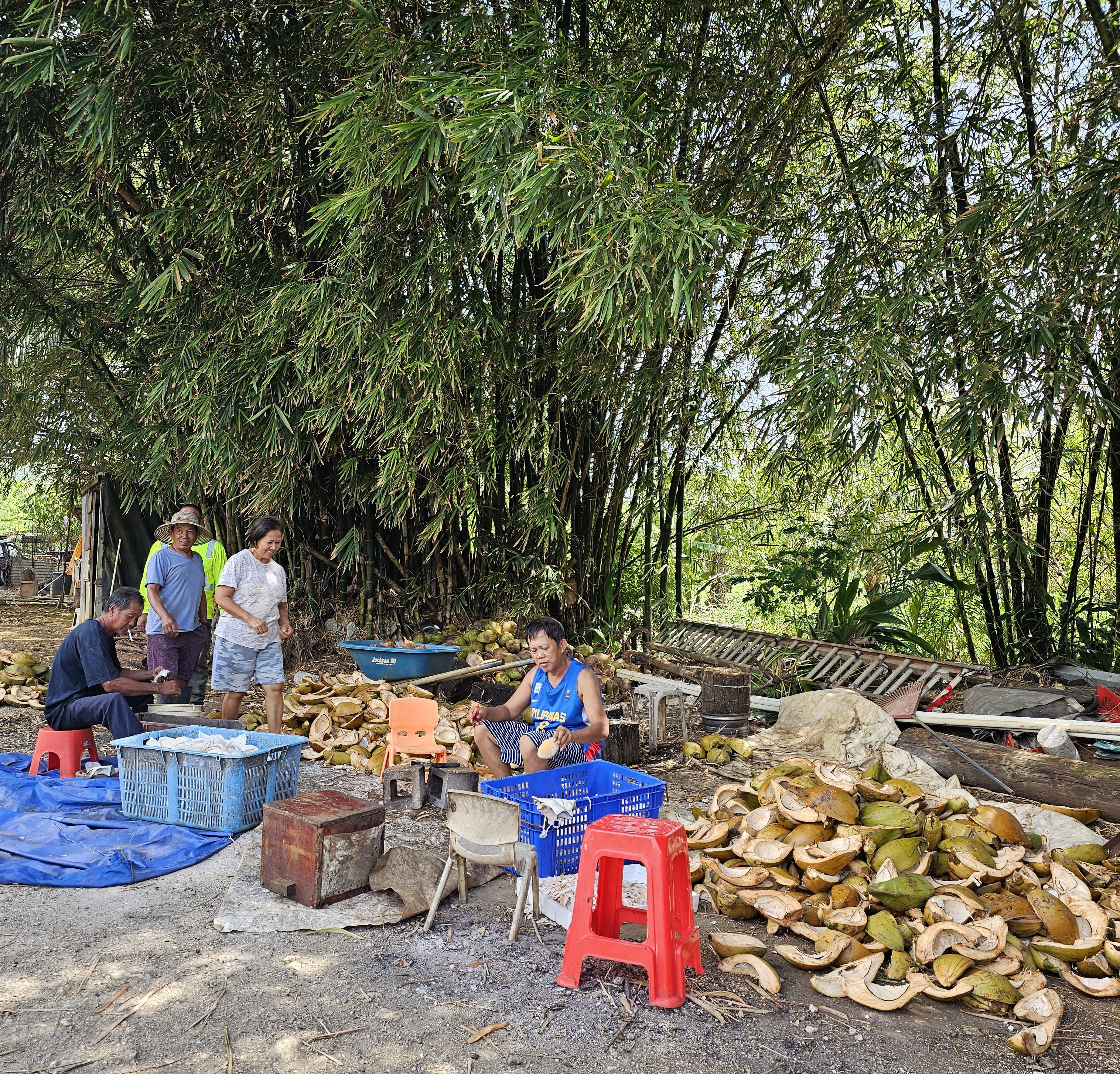
2 Put animals and pens at least 30–60 feet away from ditches, streams, wetlands, and wells.
This helps filter the runoff and soak it into the ground before it can be carried downstream.
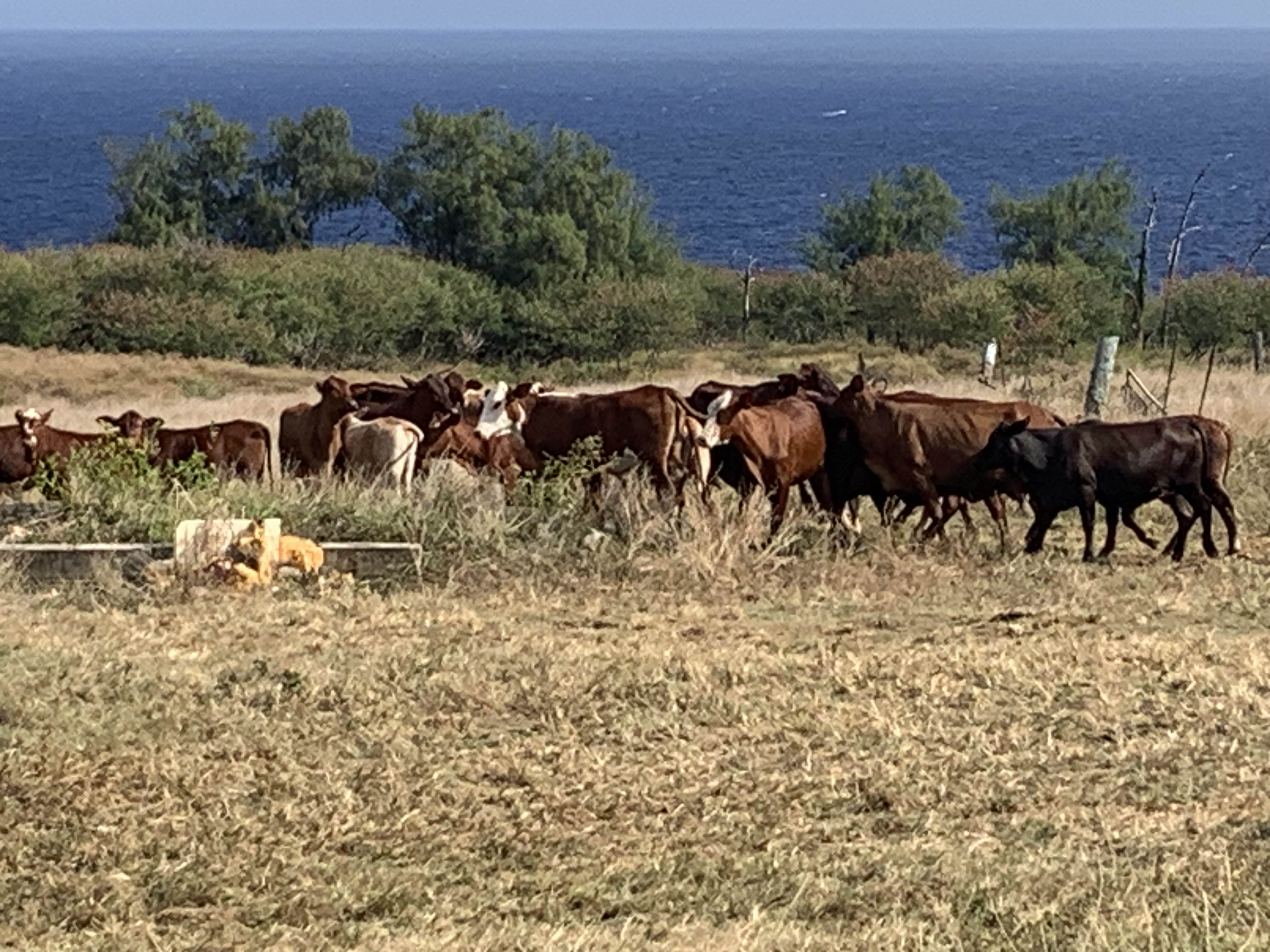
3 Direct clean uphill rain runoff away from animal pens and other areas with manure.
This will help to reduce the amount of manure runoff.
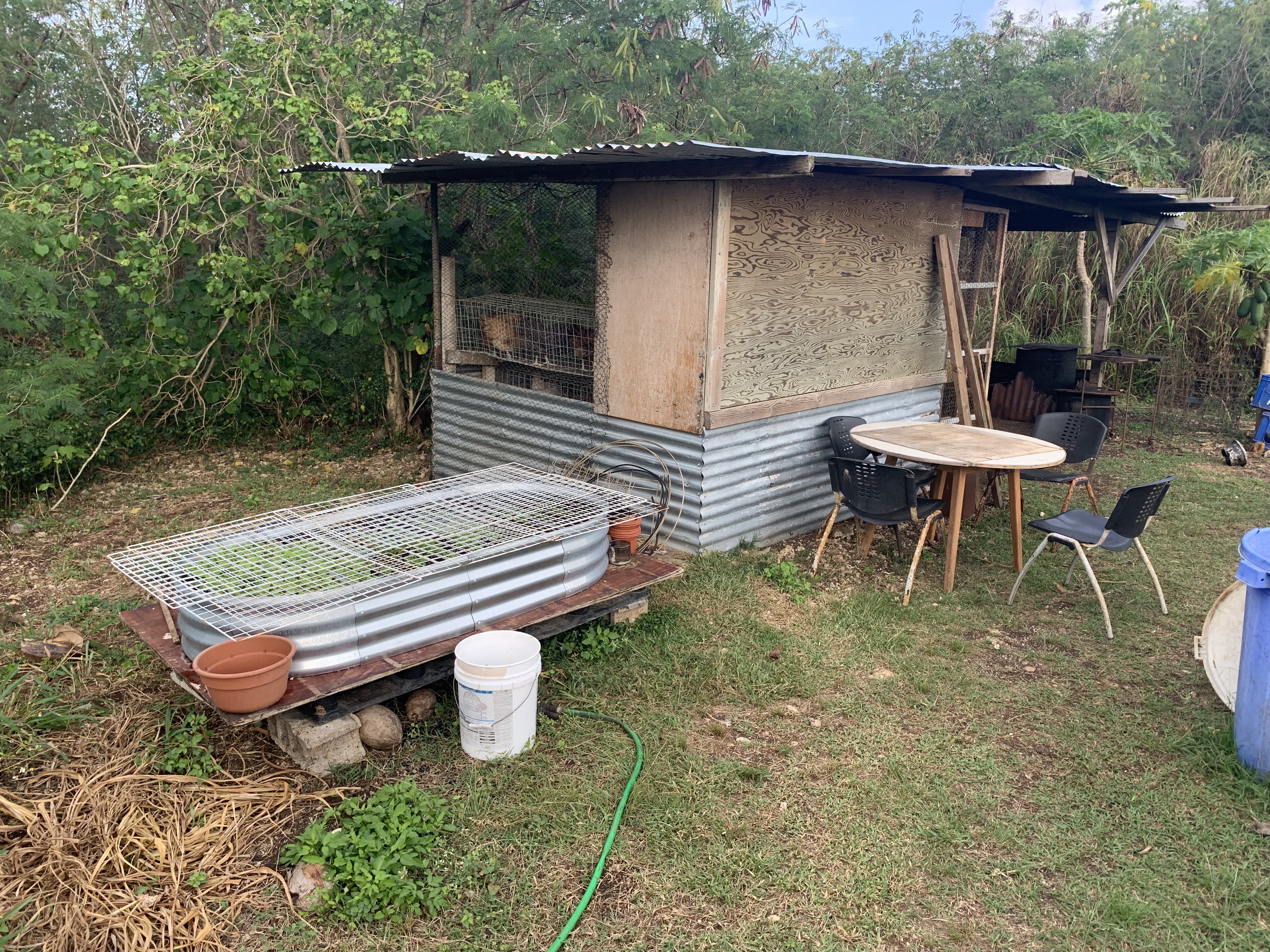
4 Use ditches and berms to guide manure runoff from pens away from streams.
Keep bacteria and mud out of the waters!
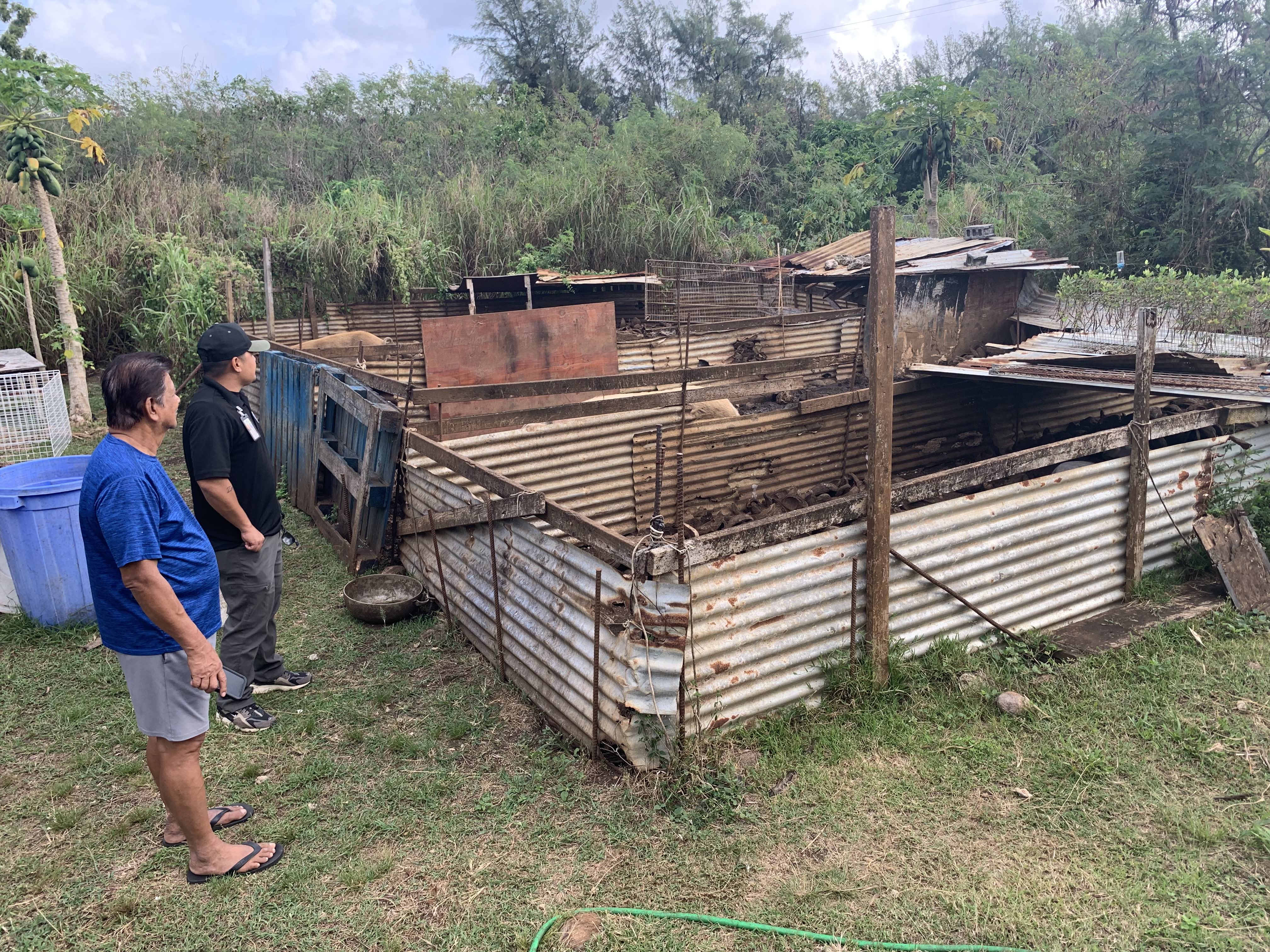
5 Keep animals under a roof to reduce manure runoff when it rains.
This will greatly reduce the amount of manure runoff that needs to be controlled.
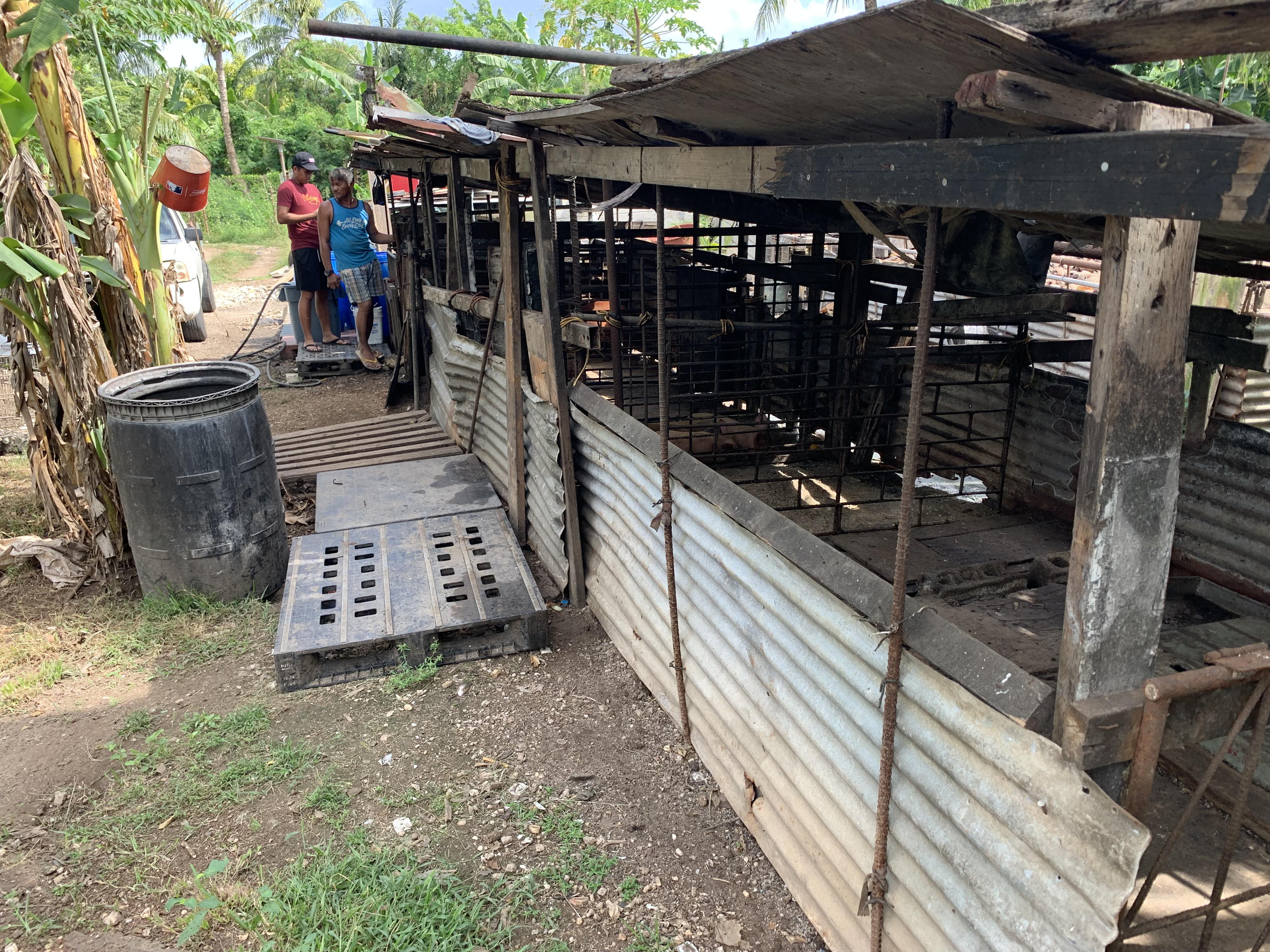
6 Guide muddy and manure runoff to areas with thick grass and other vegetation.
Pushing the manure runoff into grassy areas helps to filter it and soak it into the soil.
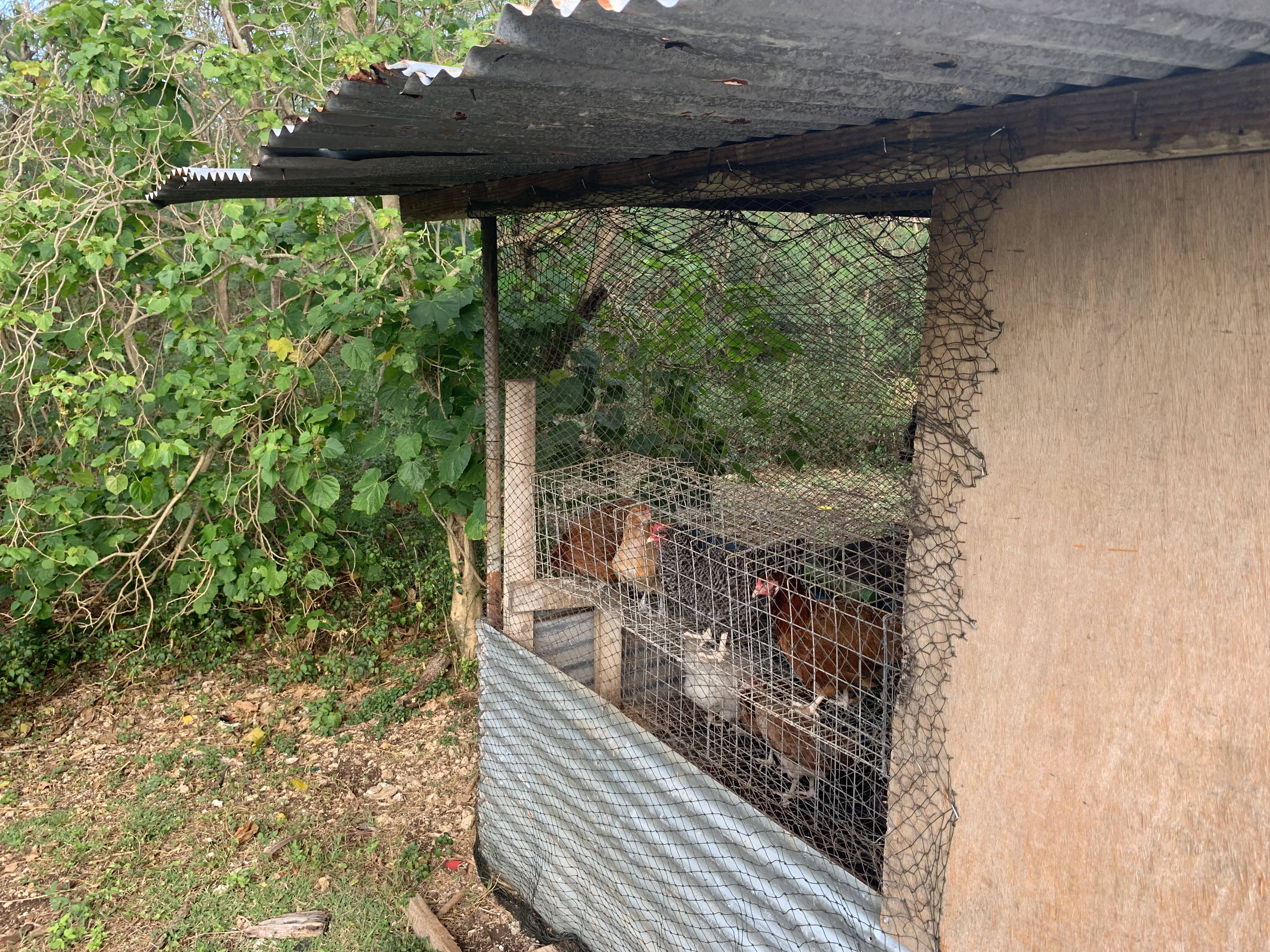
7 Use manure to fertilize vegetable gardens and fruit trees.
The manure has valuable nutrients that help plants grow (including algae, which is why we want to keep it away from the water).
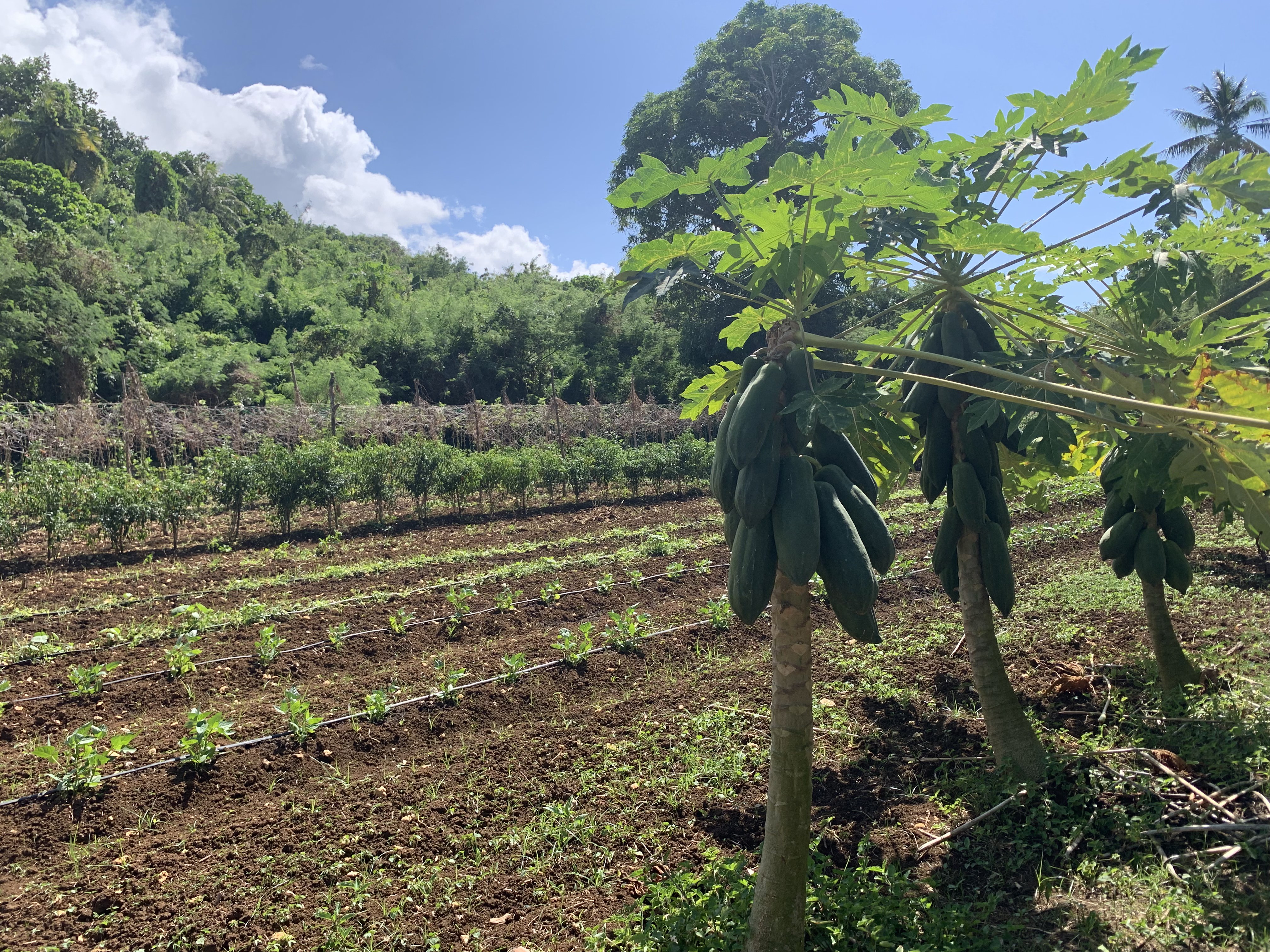
8 Keep trash and litter off the ground and out of the streams.
All families and island friends deserve a clean, trash-free environment—on the land, and in the water
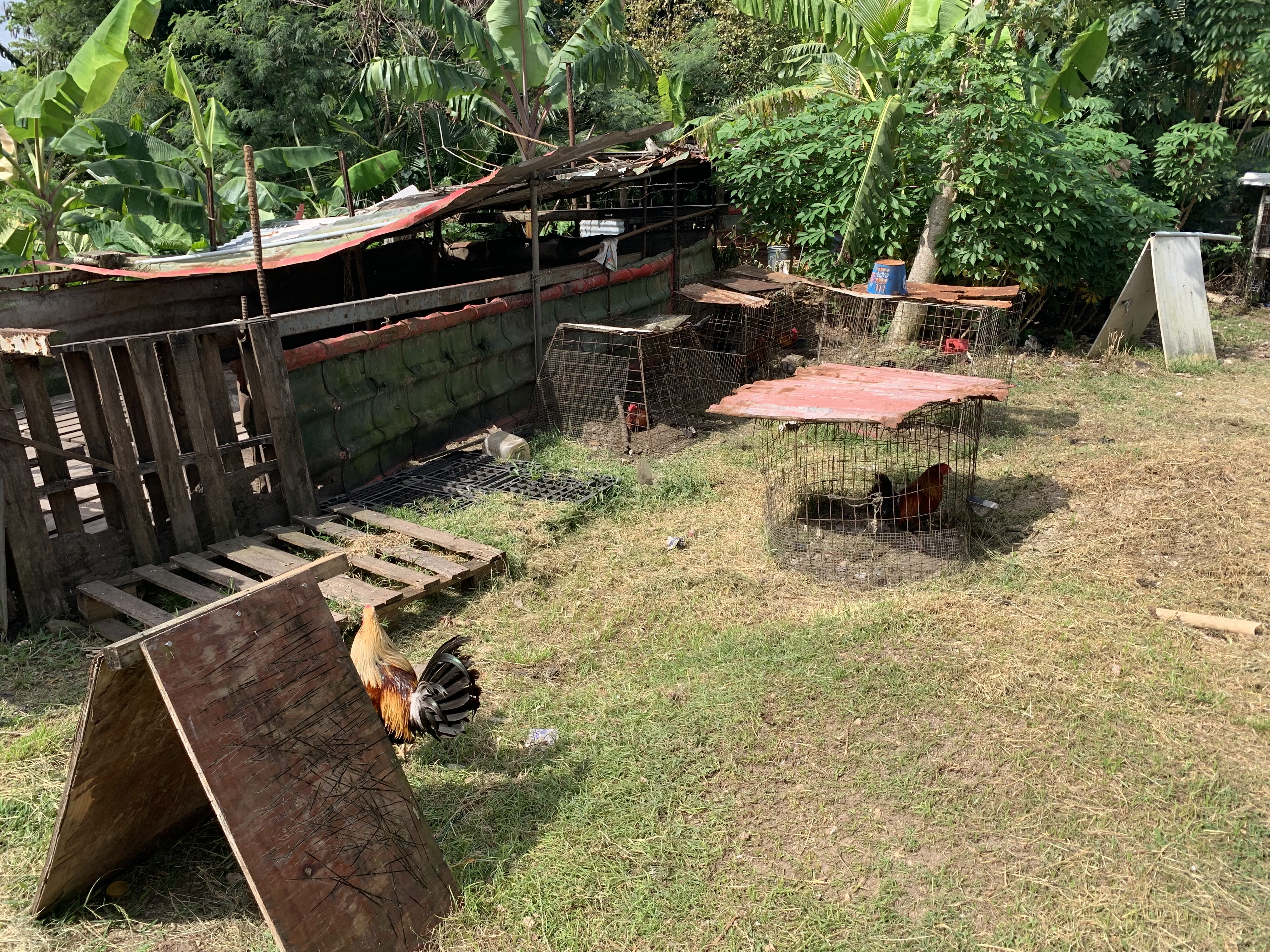
RESOURCES
Livestock BMP Resources
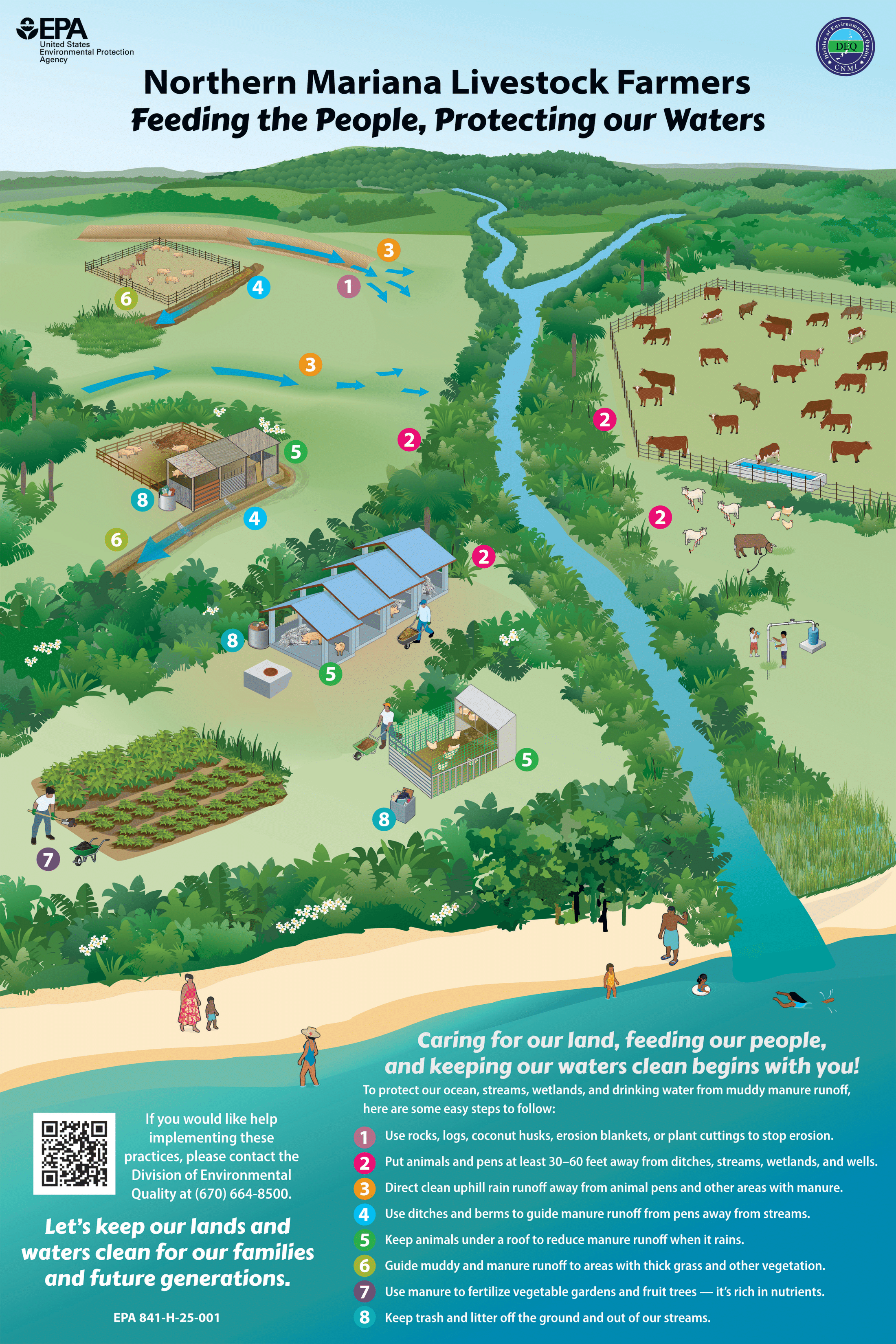 BMP Poster (English)
BMP Poster (English)
Best Practices Video
Description: 4-minute video interview with John Castro at his small piggery discussing different management practices for livestock operations.
Resource Links to Other Agencies
- CNMI BECQ Polluted Runoff Control Program
- USDA NRCS Saipan Service Center
- CNMI Division of Environmental Quality Earthmoving and Erosion Control Management
- Northern Mariana College – Cooperative Research Extension and Education Service
- CNMI Erosion & Sediment Control Field Guide
-
Rota Island Specialty Crop Association
Tel: 789-3276(FARM)
Email: - CNMI Commonwealth Development Authority
-
Tinian Cattlemen’s Association
Email:
Additional Technical Information
- Livestock Waste Management Practices for Pacific Islands, University of Hawaii
- Dry Litter Systems for Small Scale Piggery Operations, University of Hawaii
- Manure Management Planning for Small Farms, Utah State University
- Small Farm Manure Management Planning, Michigan State University
- USDA NRCS Barnyard Runoff Management
- USDA NRCS Solutions for Small Scale Farms
- USDA NRCS Agricultural Waste Management Field Handbook
- Manure Management on Small Farms, LPELC
- USDA Runoff Management on Small Farms
- USDA NRCS Composting Manure on Small Farms
- Fencing Options for Pacific Island Farms
- CNMI Stream Restoration Project Achugao Watershed Video
- CNMI NPS Success Story: Community Efforts Improve the Achugao Watershed on Saipan
- Kumoi Farms Swine Production Outreach Project
Let’s Stop Polluted Runoff!
Manure, sediment from erosion, and polluted runoff from fertilizer, pesticides, septic systems, and waste sites end up in streams and beach waters. Follow the steps on this page to make sure rain runoff is clean.
Together, we can preserve the health of our land and waters by adopting simple, effective practices that protect the environment and support local agriculture.
For any help implementing these practices, please contact the Division of Environmental Quality at (670) 664-8500.
Thanks to all the farmers and what they do to care for the people, the islands, and life-giving waters of the CNMI!